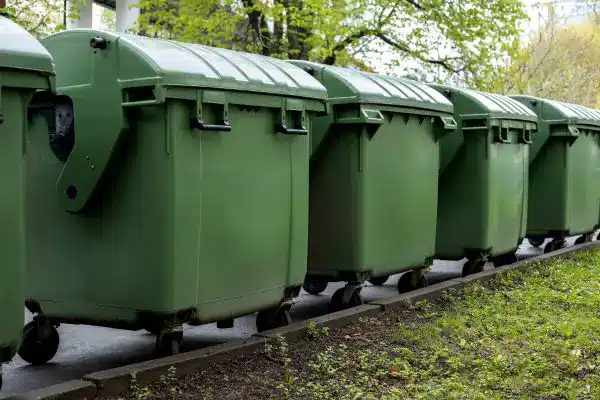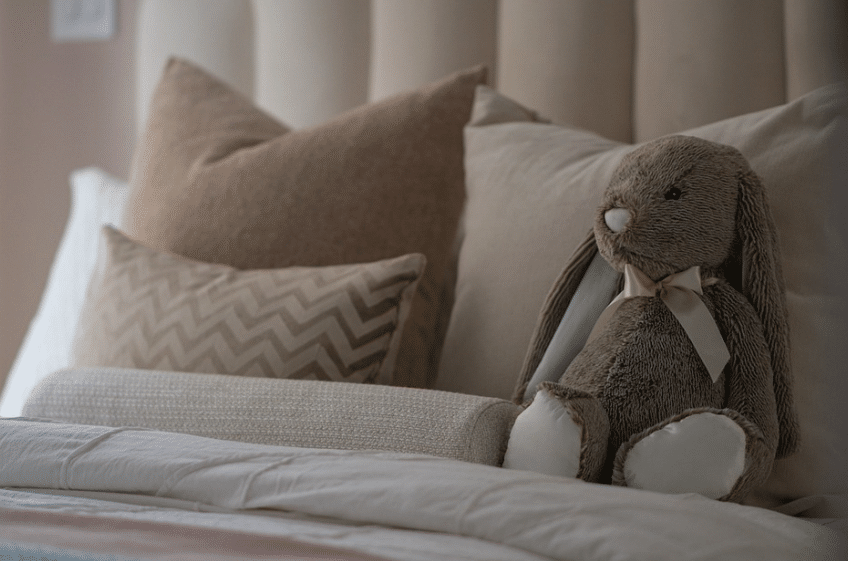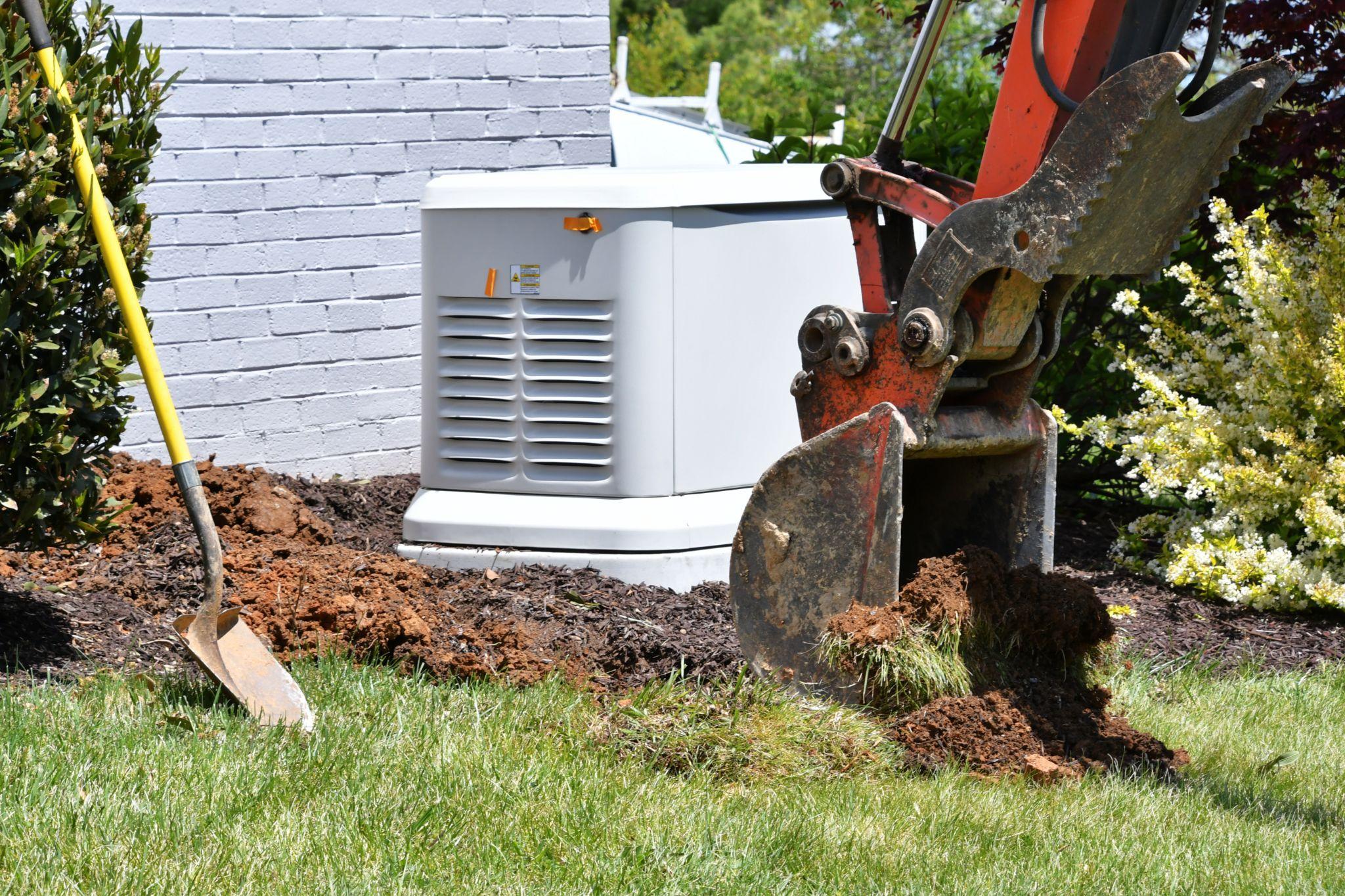The 9 Types of Metal Roofs
When it comes to choosing the right roofing material, metal roofs offer a durable, energy-efficient, and aesthetically pleasing option for many homeowners and businesses. There are nine distinct types of metal roofs, each with unique characteristics and benefits, making them suitable for various architectural styles and climates. Understanding these options can help you select the best metal roof for your needs.
Some popular choices include standing seam metal roofs, which provide a sleek, modern appearance and excellent weather resistance, and corrugated metal roofs, known for their durability and classic look. Other types, such as metal shingles and metal tiles, offer the traditional appearance of asphalt shingles or ceramic tiles with the added benefits of metal.
By exploring the different types of metal roofs available with a trusted roofing company in Indianapolis, you can make an informed decision that balances aesthetics, performance, and budget. Each type has its advantages, so discovering which one aligns with your specific requirements can ensure a long-lasting and visually appealing roof.
Understanding Metal Roof Types
Different metal roof types each offer unique benefits, aesthetics, and installation methods. It is crucial to know the characteristics, advantages, and potential drawbacks of each to make an informed decision.
Standing Seam Metal Roofs
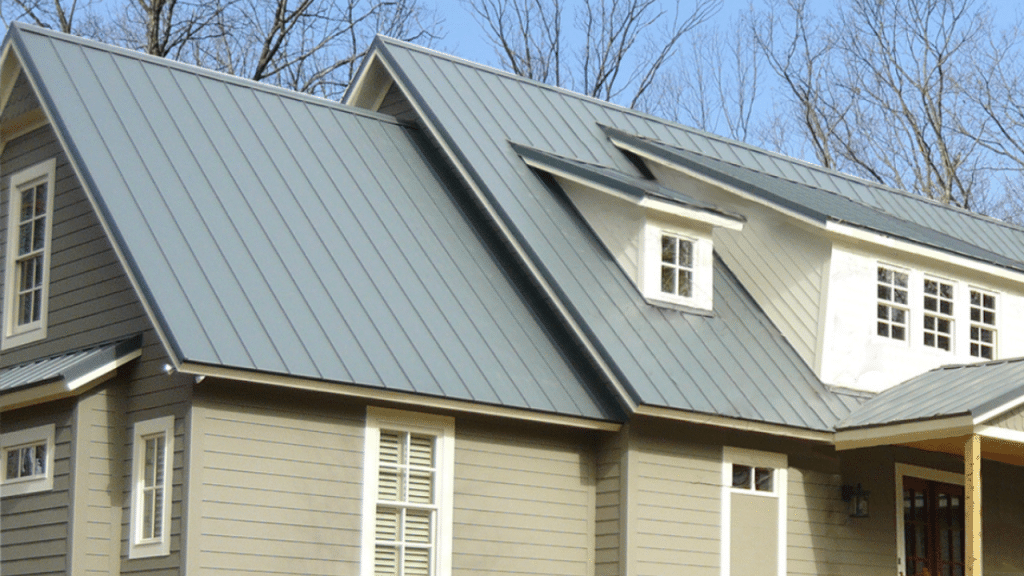
Standing seam metal roofs are known for their durability and sleek appearance. They feature raised seams that interlock to prevent water ingress. These roofs offer excellent wind resistance, making them ideal for storm-prone areas.
Pros:
- Long lifespan (up to 50 years)
- Minimal maintenance
- Energy efficient
- Modern look
Cons:
- Higher initial cost
- Requires professional installation
Metal Shingles
Metal shingles combine the durability of metal with the aesthetically pleasing look of traditional shingles. They can mimic the appearance of wood, slate, or other materials, providing both form and function.
Pros:
- Lightweight
- Variety of styles and colors
- Recyclable materials
- Long lifespan (40-70 years)
Cons:
- More expensive than asphalt shingles
- Complex installation
Corrugated Metal Roofs
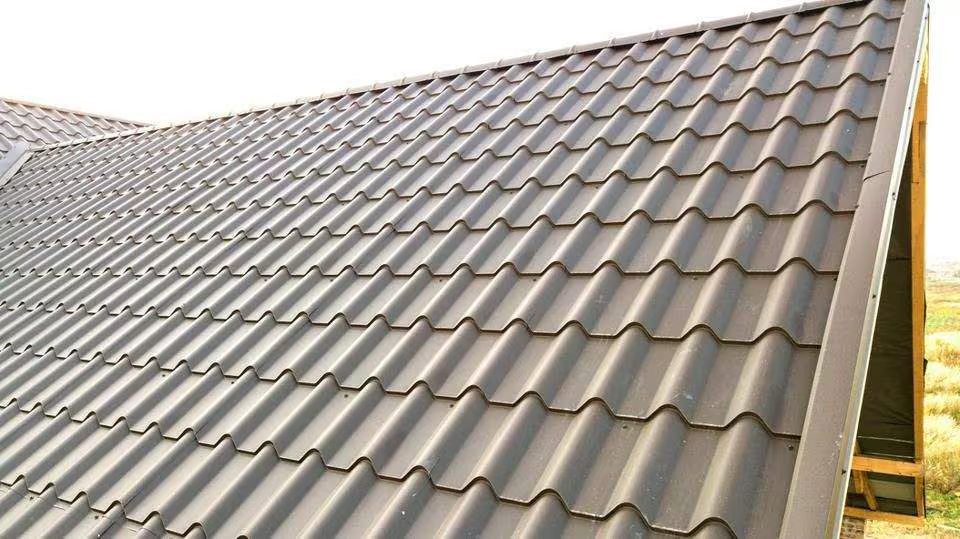
Corrugated metal roofs feature wavy patterns and are often seen in agricultural and industrial settings. They are cost-effective and easy to install, making them popular for various applications.
Pros:
- Budget-friendly
- Simple installation
- Good for outbuildings and sheds
Cons:
- Can be noisy during rain
- Limited aesthetic options
- Less durable compared to other metal roofs
Metal Tile Roofs
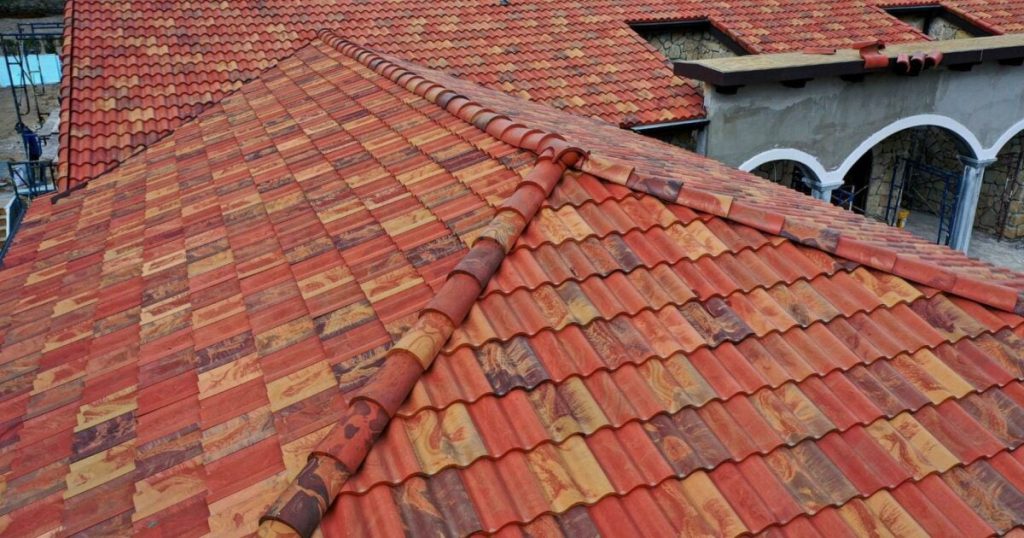
Metal tile roofs replicate the look of traditional clay or concrete tiles but offer the advantages of metal. They are lighter and more durable, providing a long-lasting roofing solution.
Pros:
- Aesthetically pleasing
- Lightweight
- Resilient to extreme weather
Cons:
- Higher cost than asphalt or concrete tiles
- Professional installation needed
Stone-Coated Steel Roofs
Stone-coated steel roofs offer the durability of metal with the visual appeal of stone. They are versatile, fitting various architectural styles, and provide excellent protection against severe weather.
Pros:
- High durability
- Fire-resistant
- Long lifespan (40-70 years)
- Attractive appearance
Cons:
- Expensive
- Complex to install
Aluminum Roofs
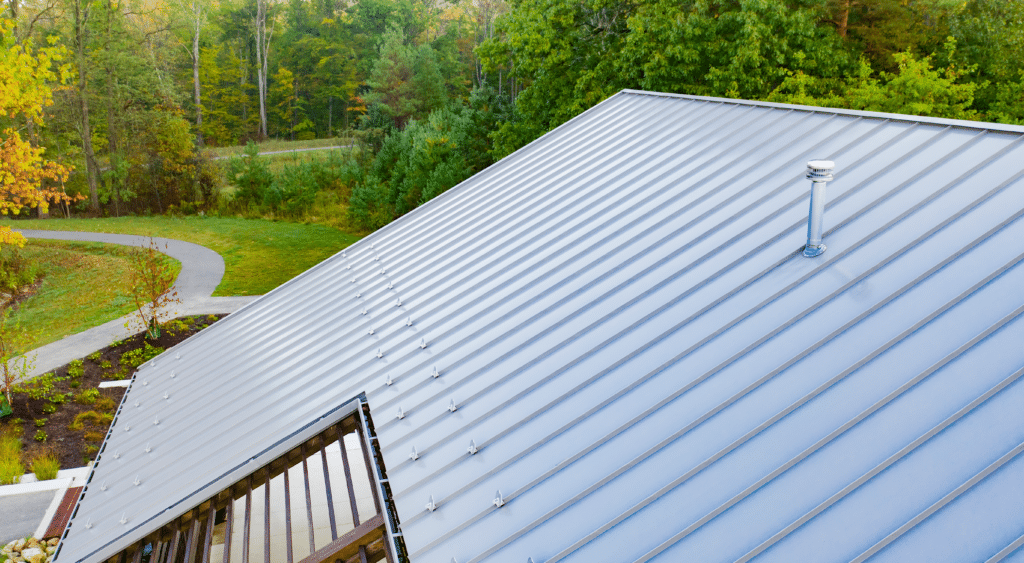
Aluminum roofs are popular for their lightweight and corrosion-resistant properties. They are ideal for coastal areas where saltwater exposure can be an issue. Aluminum also reflects heat, keeping homes cooler.
Pros:
- Corrosion-resistant
- Lightweight
- Reflective properties
Cons:
- Can dent easily
- Higher initial cost
- Limited color options
Copper Roofs
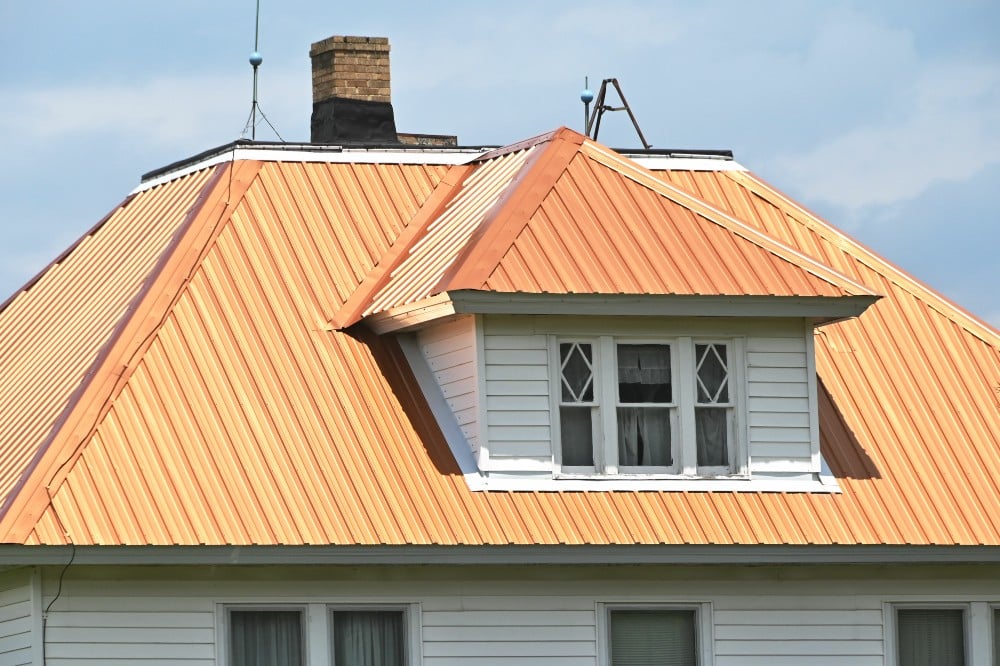
Pros:
- Extremely durable (can last over 100 years)
- Low maintenance
- Unique aesthetic that evolves
Cons:
- Very high initial cost
- Patina change may not be desirable for everyone
Zinc Roofs

Zinc roofs are favored for their self-healing properties and long lifespan. Scratches and small imperfections can heal over time. They also develop a protective patina that enhances durability.
Pros:
- Long-lasting (up to 100 years)
- Low maintenance
- Eco-friendly options
Cons:
- Expensive
- Limited availability
- Color choices may be limited
Tin Roofs
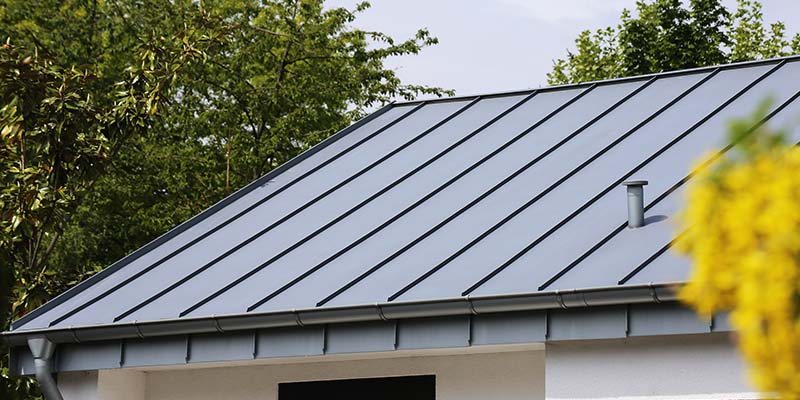
Tin roofs, often made from terne plate (steel coated with tin), are traditional but less common today. They provide a nostalgic look and good protection for various applications.
Pros:
- Nostalgic appeal
- Durable (30-50 years)
- Resistant to corrosion
Cons:
- Requires regular maintenance
- Less efficient than modern materials
- Can be pricier than some modern options
Different metal roof types offer unique benefits tailored to specific needs, aesthetics, and environmental conditions, making it essential to choose the right type for your home or building project.
Considerations for Choosing a Metal Roof
Choosing a metal roof involves assessing various factors such as durability, environmental impact, cost, appearance, and maintenance requirements.
Durability and Longevity
Metal roofs are known for their durability. They often last between 40 to 70 years, depending on the material. Steel and aluminum are particularly resilient and can withstand harsh weather conditions, including heavy snow and high winds.
Properly coated, these roofs resist rust, eliminating concerns about corrosion. This durability makes metal roofs a long-term investment for any property, reducing the need for frequent replacements and repairs.
Environmental Impact
Metal roofs can be 100% recyclable, making them a sustainable choice. Many metal roofs are made from recycled materials, reducing the need for raw material extraction.
They also contribute to energy efficiency by reflecting solar heat, which can lower cooling costs. Selecting energy-efficient coatings can further enhance this benefit, minimizing the property’s carbon footprint.
Cost Comparison
Initially, metal roofs can be more expensive than traditional roofing options like asphalt shingles. The cost varies based on the metal type, with steel and aluminum being more affordable than options such as copper or zinc.
Over time, the low maintenance costs and extended lifespan can make metal roofs more economical. Many homeowners find the initial investment is offset by reduced long-term expenses.
Aesthetic Appeal
Metal roofs offer a variety of styles and colors, with options mimicking traditional shingles, slate, or even wood shakes. This versatility allows homeowners to find a look that complements their home’s architecture.
From modern designs to classic appearances, metal roofs can enhance curb appeal. Finishes and coatings can also add a layer of customization and protection against fading.
Installation and Maintenance
Installation of a metal roof requires specialized skills, which can affect labor costs. It is crucial to hire experienced professionals to ensure proper installation and prevent issues such as leaks.
Maintenance is minimal compared to other types, primarily involving regular inspections and occasional cleaning. This ease of maintenance is an attractive feature for many property owners.




